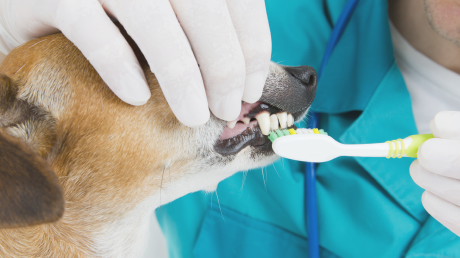Introduction
Are you one of those people who dread going to the dentist? The thought of sitting in that chair, with bright lights shining down on you, and the sound of dental tools buzzing in your ears can send shivers down your spine. Dental anxiety is a common issue that affects millions of people worldwide, preventing them from seeking the dental care they need. However, fear-free dentistry offers a solution to this problem through the use of sedation dentistry techniques.
Understanding Sedation Dentistry
Sedation dentistry is a technique used by dental professionals to help patients overcome their fear and anxiety associated with dental procedures. It involves the use of sedatives to relax the patient during the treatment, ensuring a comfortable and stress-free experience.
The Benefits of Sedation Dentistry
1. Anxiety Relief: Sedation dentistry helps patients with dental phobia or anxiety to feel calm and relaxed throughout the procedure.
2. Pain Management: Sedatives can also help in managing pain, making the dental treatment more comfortable for the patient.
3. Time Efficiency: Sedation allows the dentist to perform complex procedures in a shorter amount of time, as the patient remains relaxed and cooperative.
4. Increased Comfort: Sedation dentistry ensures a pain-free and comfortable experience, reducing any discomfort or sensitivity during the treatment.
The Different Levels of Sedation
1. Minimal Sedation
Minimal sedation involves the use of mild sedatives, such as nitrous oxide (laughing gas) or oral medications. The patient remains awake but feels relaxed and at ease.
2. Moderate Sedation
Also known as conscious sedation, moderate sedation induces a deeper level of relaxation. The patient may feel drowsy and may not remember much of the procedure.
3. Deep Sedation
Deep sedation is administered intravenously, causing the patient to be in a state between consciousness and unconsciousness. The patient may require assistance with breathing during this level of sedation.
4. General Anesthesia
General anesthesia is the highest level of sedation, where the patient is completely unconscious. It is typically used for complex or invasive dental procedures.
Who Can Benefit from Sedation Dentistry?
Sedation dentistry is suitable for individuals who:
- Have dental phobia or anxiety
- Have a low pain threshold
- Require extensive dental work
-
Summary
Fear-free dentistry, also known as sedation dentistry, is a specialized approach that aims to alleviate dental anxiety and fear in patients. It involves the use of various sedation techniques to help patients relax and feel comfortable during dental procedures. Sedation dentistry can be beneficial for individuals with dental phobia, sensitive gag reflexes, low pain tolerance, or those requiring extensive dental work.
There are different levels of sedation used in fear-free dentistry, ranging from mild sedation to deep sedation or general anesthesia. The choice of sedation method depends on the patient’s level of anxiety and the complexity of the dental procedure. Common sedation options include nitrous oxide (laughing gas), oral sedatives, intravenous (IV) sedation, and general anesthesia.
By opting for fear-free dentistry, patients can experience a stress-free and painless dental visit. Sedation dentistry not only helps patients relax but also allows dentists to perform their work more efficiently and effectively. It enables individuals to receive the necessary dental care without the fear and anxiety that often accompany dental visits.

In this blog series, we will delve deeper into the world of fear-free dentistry, exploring the different sedation techniques, their benefits, and the types of dental procedures where sedation dentistry is commonly used. We will also address common concerns and misconcepti ons surrounding sedation dentistry, providing you with the information you need to make an informed decision about your dental care.
- Q: What is fear-free dentistry?
- A: Fear-free dentistry is an approach that focuses on minimizing anxiety and fear associated with dental procedures through the use of sedation techniques.
- Q: What is sedation dentistry?
- A: Sedation dentistry involves the use of medication to help patients relax during dental procedures. It can range from mild sedation to deep sedation, depending on the patient’s needs.
- Q: How does sedation dentistry work?
- A: Sedation dentistry works by administering medication that helps patients feel calm and relaxed. The type and dosage of medication used will depend on the patient’s level of anxiety and the complexity of the dental procedure.
- Q: Is sedation dentistry safe?
- A: Yes, sedation dentistry is generally safe when administered by a trained and experienced dental professional. The patient’s medical history and overall health will be taken into consideration to ensure the appropriate sedation method is used.
- Q: Who can benefit from fear-free dentistry?
- A: Fear-free dentistry can benefit individuals who experience dental anxiety or phobia, have a low pain threshold, have a sensitive gag reflex, require extensive dental work, or have difficulty sitting still for long periods.
- Q: What are the different types of sedation used in dentistry?
- A: The different types of sedation used in dentistry include nitrous oxide (laughing gas), oral sedation (pills), intravenous (IV) sedation, and general anesthesia. The appropriate type will be determined based on the patient’s needs and the complexity of the procedure.
- Q: Will I be unconscious during sedation dentistry?
- A: It depends on the type of sedation used. With mild to moderate sedation, you will remain conscious but deeply relaxed. With deep sedation or general anesthesia, you may be unconscious for the duration of the procedure.
- Q: How long does the sedation effect last?
- A: The duration of the sedation effect will vary depending on the type and dosage

Welcome to my website! My name is Mitchell Whitfield, and I am a passionate Dental Artisan with years of experience in the field. I am dedicated to creating beautiful smiles and providing exceptional dental care to my patients.
